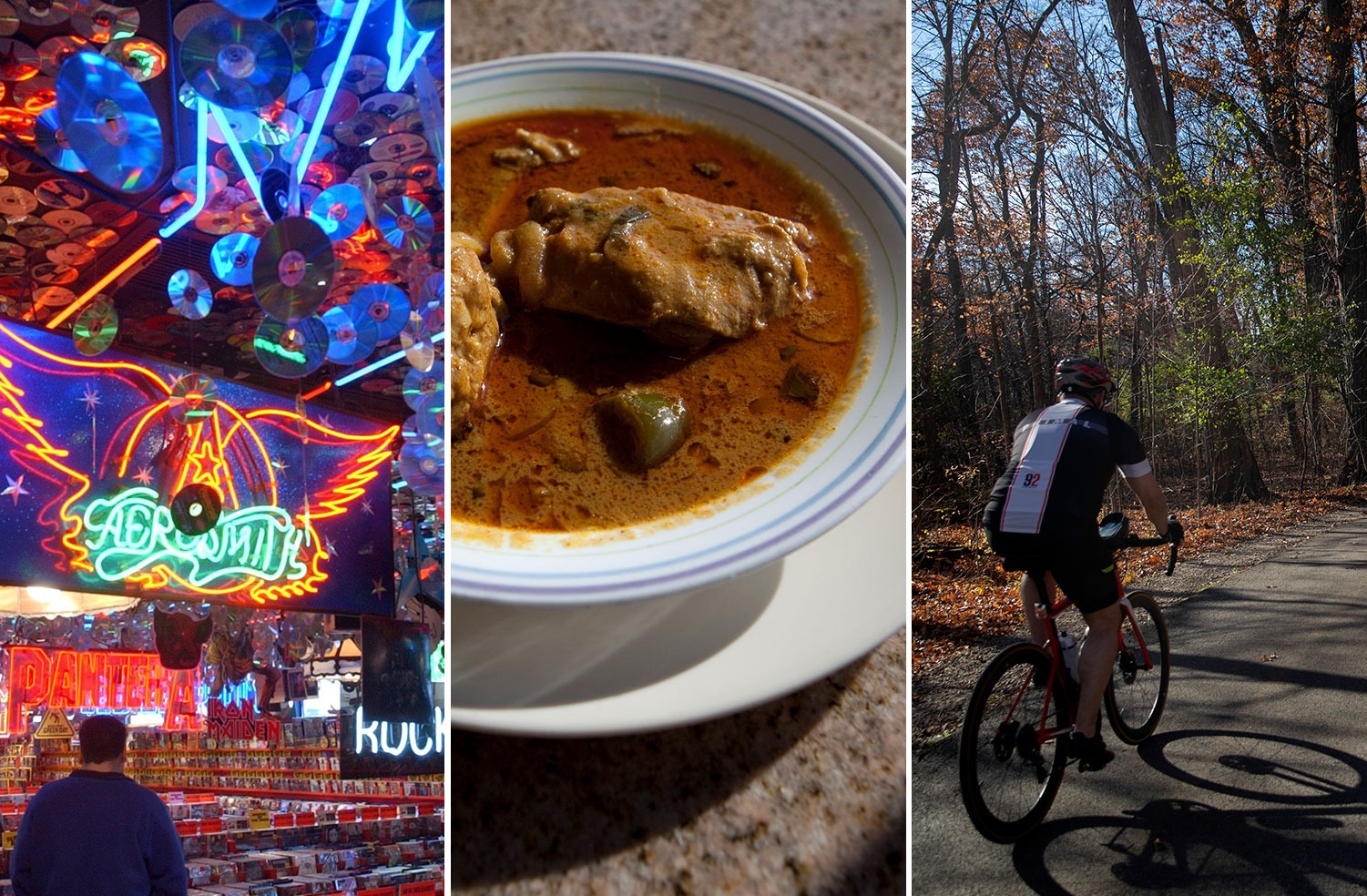“Do you feel safe in Chicago?” asks the former newspaper columnist, who now operates a website calling for new leadership in the city.
“Our greatest city is a crime-ridden hellhole,” says the politician, who knows that fear motivates voters more than hope.
“Everywhere I go, I’m confronted by the same question: ‘What’s going on in Chicago?’” says the businessman, who worries that crime will discourage talented executives from moving here. “There is a general sense out here that our city is in crisis.”
I have just one word to say to these guys, who have been talking up the seamy side of the city for page hits, power, and profits: Tellwitcha.
So many journalists, politicians, and businessmen have been badmouthing Chicago that I am going to use this space to goodmouth it — with a list of places worth visiting in every one of our 77 community areas. They’re not tourist attractions, most of them, but restaurants, bars, parks, bookstores, bowling alleys, or even hardware stores I find myself gravitating to whenever I’m in the area. There’s something good in every neighborhood.
Over the past year or so, I have been trying to write a story about each community area. In search of subjects, I’ve walked or bicycled through every neighborhood in the city. Even though I’ve lived in Chicago for 25 years, there’s always an unfamiliar corner to turn, always another layer to peel off the Big Onion. The more winding streets of bungalows or straight rows of two flats I see, the more I realize I haven’t seen. The wonderful thing about Chicago is that even if you do manage to see it all, you can start over again, and it will be a new experience.
“Chicago is like a snake that sheds its skin every 30 years or so and puts on a new coat to conform to a new reality,” wrote local historian Dominic Pacyga in his book Chicago: A Biography.
So here we go, the first of a four-part series. Before I begin, though, I want to apologize for what I wrote about your neighborhood. I’m sure I picked the wrong spot. I was just a tourist there.
1. Rogers Park: Lighthouse Tavern, 1236 W. Chase Ave.
Whimsical, yet nautical, this maritime-themed bar a block from Lake Michigan is decorated with ship’s wheels and Great Lakes nautical charts. Schlitz on draft is $4, Hamm’s tall boys $3.50. On the weekends, bands cram into the little space between the bar and the jukebox. It’s my local tavern, where I met Richard Marx after I called him “shameless” in a blog post.
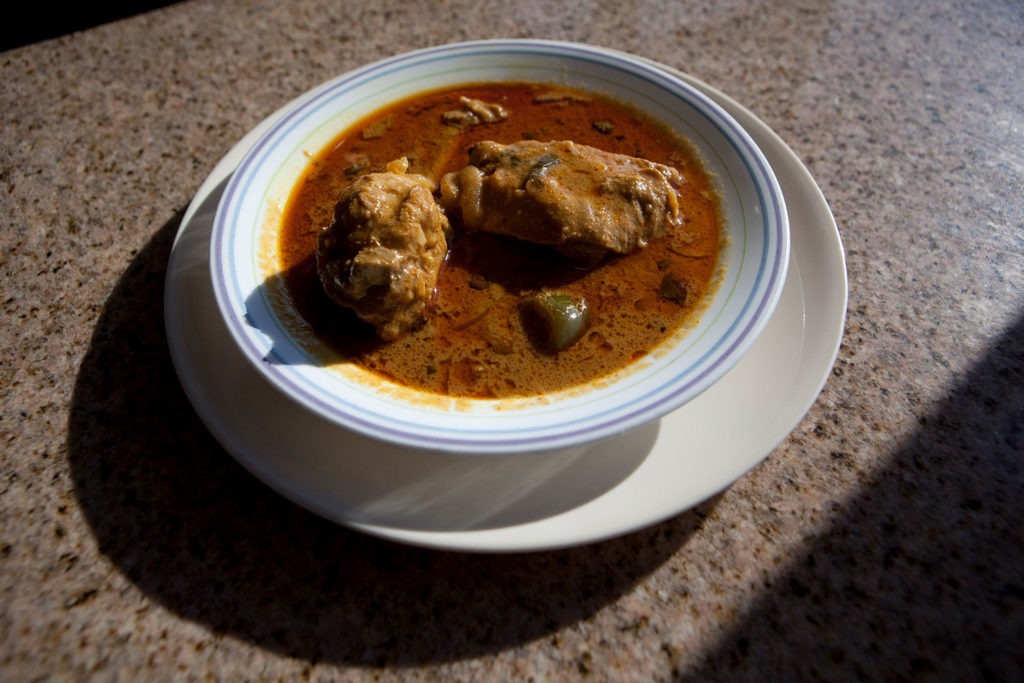
2. West Ridge: Ghareeb Nawaz, 2302 W. Devon Ave.
“Chicken biryani! Chicken biryani!” call the Pakistani cooks behind the counter to hustling cabdrivers in a hurry for takeout. Even better, though, are the vegetarian entrees: daal, aloo palak, chana masala. A six-buck plate can be stretched into two meals. There’s usually cricket on the TV, and prayer rugs in a back room, for the mostly Muslim customers.
3. Uptown: Sun Wah BBQ, 5039 N. Broadway
Do not order anything but duck at Sun Wah, a Hong Kong restaurant on the “Asia on Argyle” strip, as the sign on the ‘L’ viaduct calls it. Also, do not order duck anywhere else. Sun Wah advertises its specialty with a window full of braised ducks dangling by their necks from hooks, ready to be decapitated for the Beijing Duck Dinner, although these ducks have bigger problems already. For carryout, try the Roast Duck on Rice, the Roast Duck Strips on Noodles, or the Duck Feet and Wings Braised in Abalone Sauce.
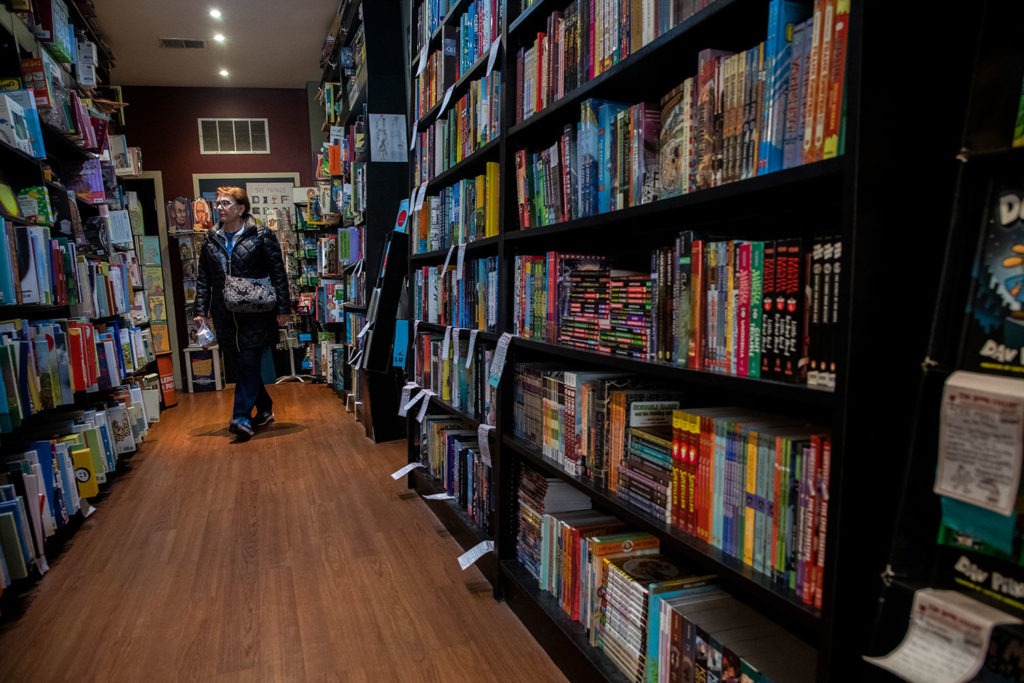
4. Lincoln Square: The Book Cellar, 4736 N. Lincoln Ave.
Borders Books & Music got too big, and failed. The 25,000-square-foot mediasaures have been survived by independent bookstores who know how to appeal to their neighborhoods. The Book Cellar hosts multiple book clubs — on Racial Justice, on classics — children’s story hours (one sees a lot of strollers in Lincoln Square), and frequent local author nights. Small publisher? Self publisher? There’s an audience for any writer at The Book Cellar. As paper books have become a niche product, niche retailers are the best place to buy them.
5. North Center: Timber Lanes, 1815 W. Irving Park Rd.
Bowling doesn’t get much simpler than this. Eight lanes. Two bucks a game, three bucks for the shoes. Need to keep score? Here’s a pencil and a score sheet. A sign on the wall celebrates a 299 game, but there’s no judgment toward those who roll a 75. In 2011, Ameya Pawar ran his long-shot 47th Ward aldermanic campaign out of the alley.
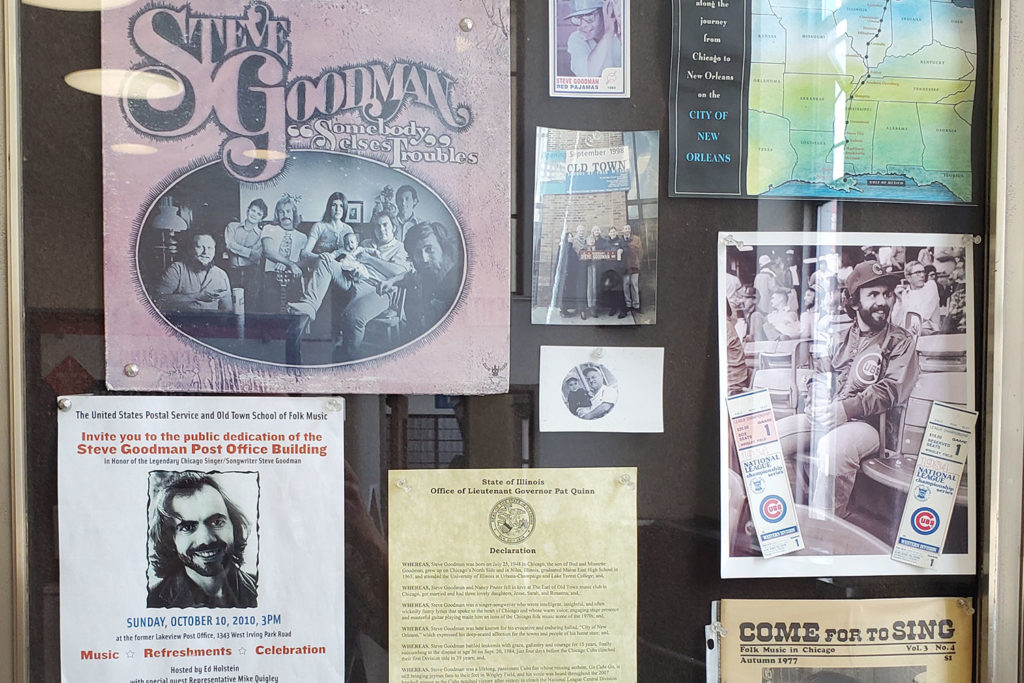
6. Lake View: Steve Goodman Post Office, 1343 W. Irving Park Rd.
“City of New Orleans,” a song inspired by a train trip to visit his in-laws in Mattoon, made Steve Goodman famous worldwide. In Chicago, though, he is best known for “A Dying Cub Fan’s Lament” and “Go Cubs Go,” sung after every home victory at Wrigley Field, where Goodman’s ashes were scattered after he died of leukemia in 1984, at 36. The post office closest to the ballpark was named in Goodman’s honor in 2010: A lobby display includes album covers, a bar mitzvah portrait, a photo of Goodman and John Prine, and a bio.
7. Lincoln Park: Bauler Playlot Park, 510 W. Wisconsin St.
I chose this children’s playground because I have fond memories of pushing my daughter in the baby swings. Also because it’s named after former 43rd Ward Ald. Matthias “Paddy” Bauler, who ran a speakeasy, then a tavern, and declared “Chicago ain’t ready for reform yet” after Richard J. Daley was elected mayor. Only in Chicago.
8. Near North Side: Fourth Presbyterian Church, 126 E. Chestnut St.
Unusually for a Protestant church, Fourth has a morning and an afternoon service: traditional at 10 a.m., jazz at 4 p.m. Out too late on Saturday night? Training for a marathon on Sunday morning? Get an hour with God at Fourth. It’s also more ornate than most Protestant churches, with a vaulted wooden ceiling and glowing chandeliers, which is why the wedding scene in My Best Friend’s Wedding was filmed there.
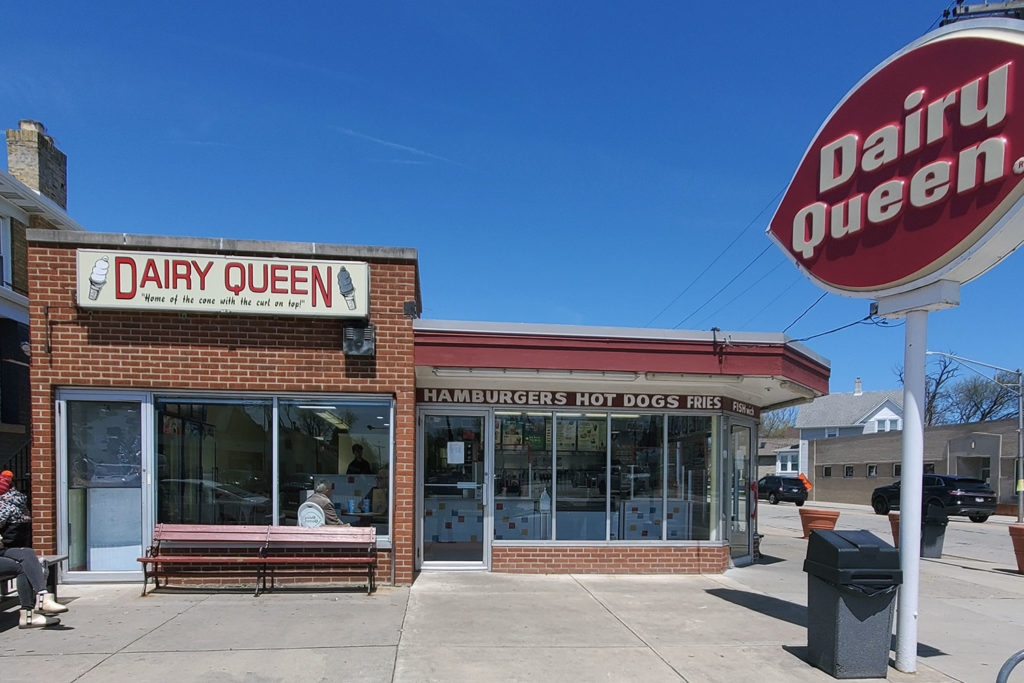
9. Edison Park: Dairy Queen, 2 Devon Ave., Park Ridge
Edison Park has one of Chicago’s finest neighborhood restaurant rows, along Northwest Highway. Elliott’s Seafood Grille, The Curragh Irish Pub, Cafe Touche, and Tavern on the Point all look like fine dining experiences. I’m not a foodie, though, so the restaurant that really caught my eye when I visited Edison Park was the retro Dairy Queen, just across Ozanam Avenue…in the suburbs. (Boo.) “Home of the cone with the curl on top” read the motto under the old-fashioned “Dairy Queen” lettering. Painted above the dining room windows: Hamburgers. Hot Dogs. Fries. Fishwich. I don’t think I’ve seen a Fishwich since I was in a school lunch line.
10. Norwood Park: East and West Circle Drive
The Chicago grid falls apart on the Far Northwest Side. This street, exactly one mile in circumference, was laid out in the late 19th Century, when Norwood Park was an independent village, and hoped to become a resort suburb, like the Frederick Law Olmsted-designed Riverside. Just off the Metra stop, it’s a peaceful route through what looks like the set of a Judy Garland movie: Every charming pre-war home is adorned with an American flag, a St. Patrick High School placard, or both. When Norwood Park held a “Going in Circles” 5K, the course was three laps around the Drive.
11. Jefferson Park: Jefferson Masonic Temple, 5418 W. Gale St.
The Masonic temple in Rogers Park is now occupied by the Hare Krishnas. The temple in Irving Park is a brewpub. Only in Jefferson Park is the temple still a temple. Like most fraternal organizations, the Freemasons are going out of style: Membership has dropped from 4 million in 1959 to 1 million today. They’ve left behind a lot of sturdy brick architecture, though. I belong to a lodge that meets here. My bartender got me in. Half the members are gay, because International Mr. Leather founder Chuck Renslow once belonged, while the other half drive trucks for the city.
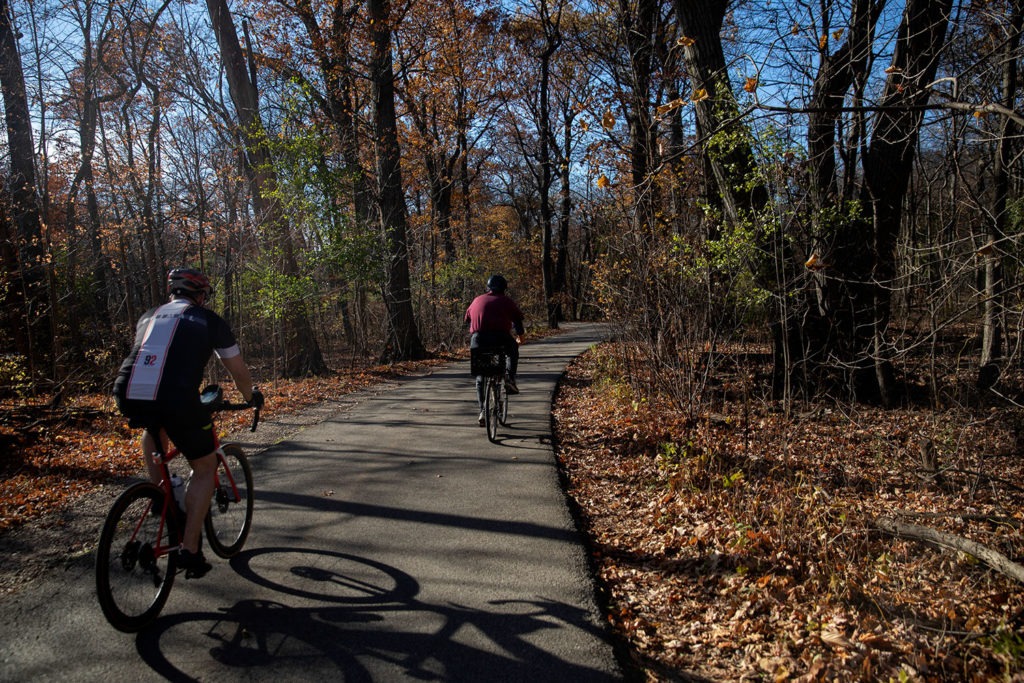
12. Forest Glen: Caldwell Woods, West Devon and North Nagle Avenues
Forest Glen is a quasi-suburban neighborhood. Caldwell Woods is a recreational gateway to the suburbs. Here begins the North Branch Trail System, which follows the Chicago River to Golf Road, then splits off and continues through Skokie Lagoons, ending at the Botanic Gardens. Caldwell Woods is closer to the urban core than most Forest Preserves, so it’s a convenient place to cross-country ski. Go to Superdawg when you’re done; it’s right across the street.
13. North Park: Northeastern Illinois University, 5500 N. St. Louis Ave.
North Park is Chicago’s showcase for mid-20th Century architecture — cool jazz set in concrete, brick or stone. So many dry cleaners and doctor’s offices look as though they could have been designed by Minoru Yamasaki, or Mike Brady. The Peterson Avenue Midcentury Modern District, between Pulaski and Oakley avenues, was constructed from the 1950s to the 1970s. Northeastern Illinois settled in North Park in 1961; its campus is a museum of the institutional architecture from an era when higher education was brought to the masses. The administrative offices are wrapped in a honeycomb of buff-colored concrete. The brown, brick Science Building is more brutal than anything Walter Netsch designed for UIC.
14. Albany Park: River Running Track, 5011 N. Albany Ave.
Once, if runners wanted to do interval training on the mid-North Side, they had to go to Winnemac Stadium, behind Amundsen High School, which has a cinder track Sir Roger Bannister would have found familiar. Then this Olympic-style baby came along, seven lanes of some springy synthetic material that’s a whole lot faster than those crunchy cinders. Everyone’s times went down.
15. Portage Park: City News Cafe, 4018 N. Cicero Ave.
Remember newsstands? There used to be one in every neighborhood: wooden boxes from which wizened men sold the Daily Racing Form, the bulldog edition of the Sun-Times, and girlie magazines. (There was once a newsstand on the corner of Chicago and Michigan, next to Walgreens.) Now, if you can’t read something without involving a tree in the transaction, you have to go to Six Corners. When I needed a copy of Publishers Weekly, City News was the only place I could find it.
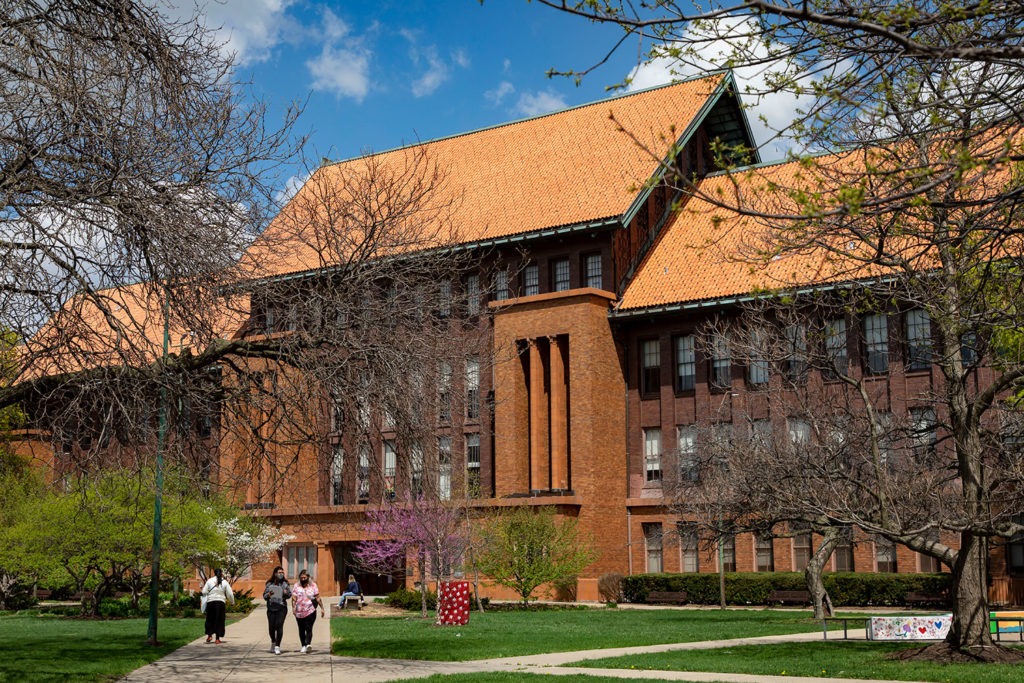
16. Irving Park: Schurz High School, 3601 N. Milwaukee Ave.
The question is not whether Schurz is the most beautiful school in Chicago. It is. The question is whether Schurz is the most beautiful building in the city, period. It may be. Majestic and earthy, of the land while transcending it, Schurz is always a striking sight on an unremarkable stretch of Milwaukee Avenue. Dwight H. Perkins, the chief architect of the Chicago Public Schools, designed a Midwestern masterpiece whose bold vertical piers and gabled terra cotta roof, in the warm colors of the Illinois soil, combined elements of Frank Lloyd’s Prairie School and Louis Sullivan’s Chicago School.
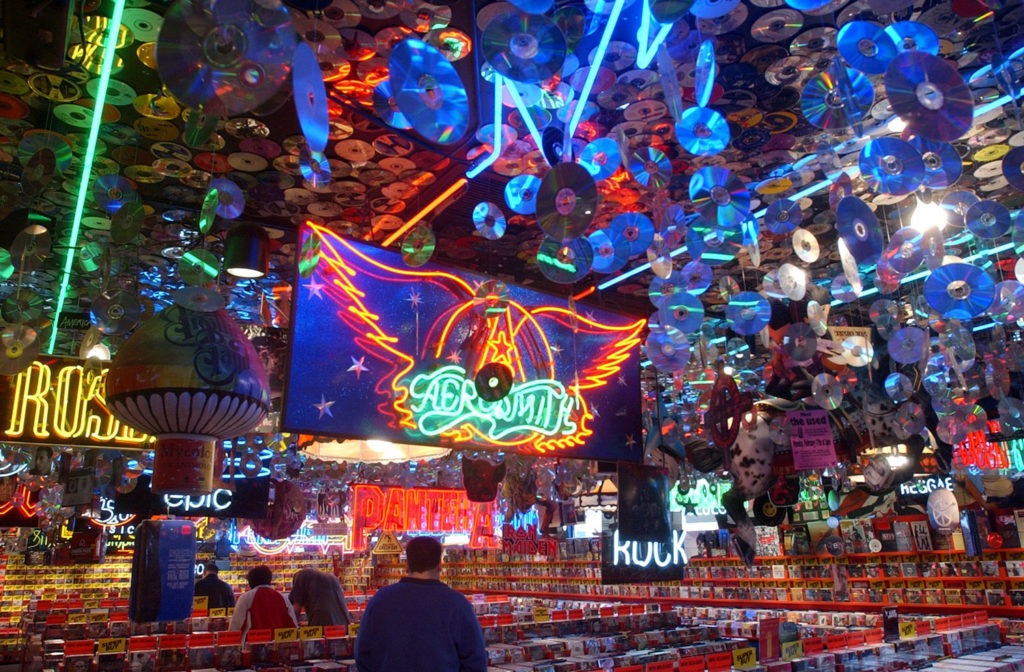
17. Dunning: Rolling Stones Records, 7300 W. Irving Park Rd., Norridge
Not technically in Dunning, but if you visit Dunning, cross the street to visit Rolling Stones, the durable independent music store in business since 1971. Rolling Stones is an archive of the last half-century of rock and roll, with lots of Zep, AC/DC, Floyd, G ‘n’ R and Nirvana on vinyl, CD, t-shirt and poster, but not everything is off the WDRV playlist: The staff plays new death metal bands on the stereo system, and staff picks include Black Midi and King Gizzard & the Lizard Wizard.
18. Montclare: Rutherford Sayre Park Fieldhouse, 6871 W. Belden Ave.
The Rutherford and Sayre families were among the first settlers in Montclare, a neighborhood of historic Victorian homes on the western edge of the city. Thomas Rutherford, the first postmaster, donated the land on which the fieldhouse was built, in 1916. That was a golden age of Chicago architecture, because even municipal architects were trying to imitate Frank Lloyd Wright — successfully, in the case of William C. Jones, who designed this Prairie-style fieldhouse with a low-slung, tiled roof and a sheltered portico.
19. Belmont-Cragin: Polish Food, 3104 N. Central Ave.
Other Polish restaurants in Chicago have long names, in the Old Country language: Podhalanka, Staropolska. Polish Food cuts right to the chase: This take-out diner’s name is an advertisement of its wares. The food is just as simple and direct: kielbasa, hot dogs, hamburgers, and knysza — pocket bread stuffed with hamburger or chicken and turkey.



